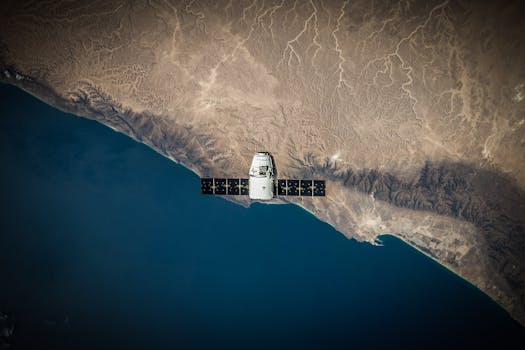
Satellite technology has become an integral part of modern communication, playing a vital role in connecting people, businesses, and communities across the globe. Satellite Technology has come a long way since its inception, and its impact on modern communication has been profound. From enabling global connectivity to facilitating the dissemination of information, satellite technology has transformed the way we interact with each other and access information.
The history of satellite technology dates back to the 1950s, when the first artificial satellite, Sputnik, was launched into space. Since then, satellite technology has evolved significantly, with advancements in launch vehicles, satellite design, and communication systems. Today, there are thousands of satellites orbiting the Earth, providing a wide range of services, including telecommunications, navigation, weather forecasting, and remote sensing.
One of the most significant contributions of satellite technology to modern communication is the provision of global connectivity. Satellites can cover vast areas, including remote and underserved regions, where traditional communication infrastructure is lacking. This has enabled people in these regions to access basic communication services, such as voice and data, and has facilitated the growth of businesses and economies. Satellite technology has also enabled the establishment of emergency communication systems, which are critical in times of natural disasters or conflicts.
The Role of Satellite Technology in Modern Communication

Satellite technology has several applications in modern communication, including broadcasting, telecommunications, and navigation. Satellites are used to transmit television signals, enabling global broadcasting and entertainment. They are also used to provide telecommunications services, such as voice, data, and internet connectivity. Additionally, satellites are used in navigation systems, such as GPS, which provide location information and timing signals.
Satellite technology has also enabled the development of new communication services, such as satellite broadband and satellite-based internet of things (IoT). Satellite broadband provides high-speed internet access to remote and underserved regions, enabling people to access online services, such as education, healthcare, and financial services. Satellite-based IoT enables the connection of devices and sensors, facilitating the collection and transmission of data, which is critical in industries such as agriculture, transportation, and energy.
Challenges and Opportunities

Despite the significant contributions of satellite technology to modern communication, there are several challenges that need to be addressed. One of the major challenges is the issue of spectrum scarcity, which is limiting the availability of satellite services. Additionally, satellite technology is vulnerable to interference, which can disrupt communication services. Furthermore, the launch of satellites into space is a complex and expensive process, which can be a barrier to entry for new players.
However, there are also several opportunities for growth and innovation in the satellite technology industry. The increasing demand for satellite services, particularly in emerging markets, is driving the development of new technologies and business models. The adoption of new technologies, such as high-throughput satellites and phased arrays, is enabling the provision of higher-quality and more efficient satellite services. Additionally, the growing interest in space exploration and development is creating new opportunities for satellite technology companies to participate in missions to the moon, Mars, and other destinations in the solar system.
Conclusion

In conclusion, Satellite Technology has played a vital role in modern communication, enabling global connectivity and facilitating the dissemination of information. The history of satellite technology is a story of innovation and perseverance, and its impact on modern communication has been profound. As the demand for satellite services continues to grow, driven by the increasing need for global connectivity and the adoption of new technologies, the satellite technology industry is poised for further growth and innovation. However, there are also challenges that need to be addressed, such as spectrum scarcity and interference, which require cooperation and investment from governments, industry players, and other stakeholders.
See more:





